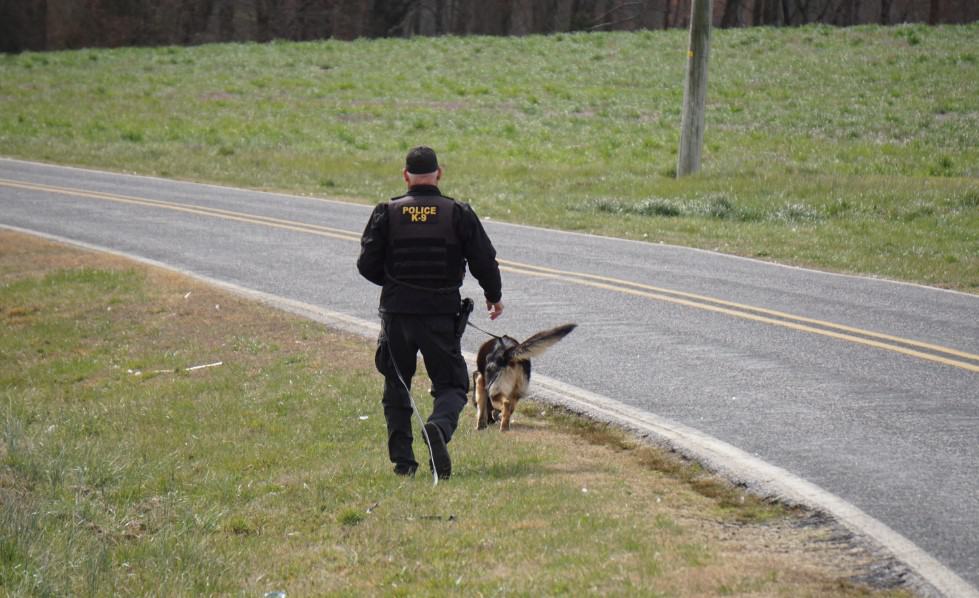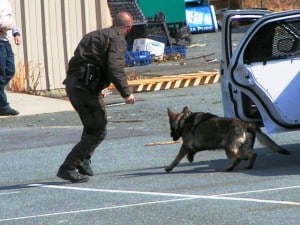There is little that is more impressive than witnessing a well trained K9 team find a person at the end of a challenging trail. Trailing exemplifies an incredible ability that dogs possess that humans couldn’t even begin to dream of experiencing. Many times, when you are part of a police K9 team, your dog is taught to trail by a professional organization. After your K9 is proficient, you may take a handler course where you learn the skills necessary to work your dog on the streets. Just as with any learned skill, continuing to practice trailing regularly after certification is vital to maintaining and improving your team’s trailing ability.
Although practice is vital to a trailing team’s success, practicing the correct way is even more important. Many well intentioned teams hit the street solid after their handler course, but eventually begin to experience problems. “My dog doesn’t look like he’s working.” “He keeps coming back to me.” “She’s all over the place.” Issues like these generally occur after a while when a K9 team or a unit begins practicing on their own. Many times handlers are not certain about the best way to troubleshoot the issues or concerns they may begin experiencing with their dog and unintentionally begin cuing them in an effort to help.
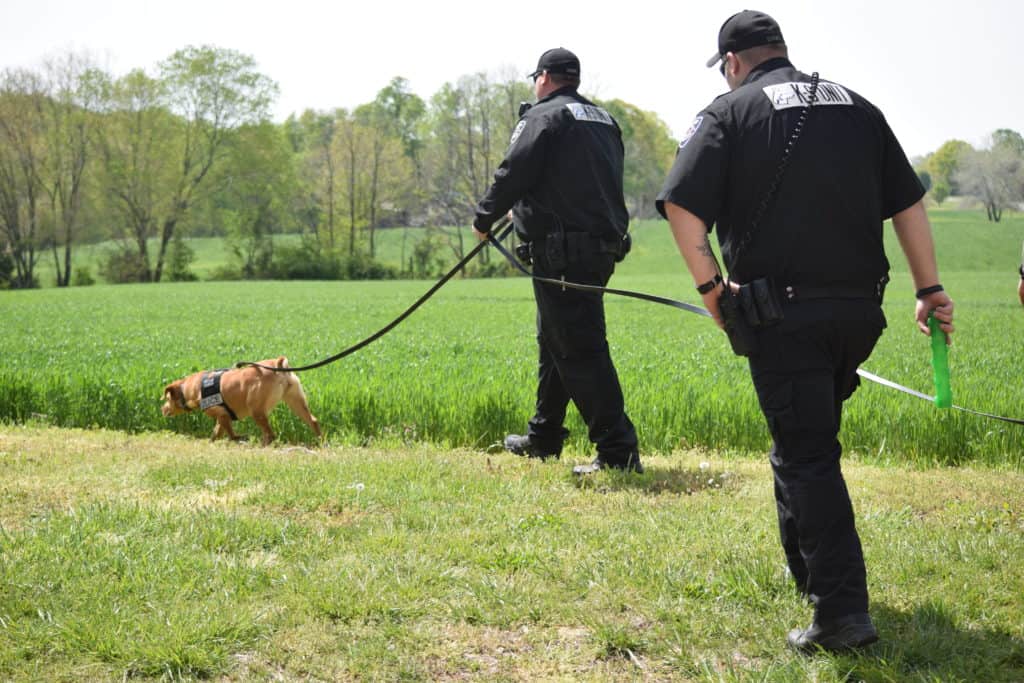
Cuing occurs most frequently when a dog handler knows where their subject is hiding. As the difficulty of the trails increases, the handler may begin losing confidence in their K9 or they begin feeling like they have to “help” their dog. This results in a dog who does not have a clear idea of what is expected of it, and who looks to their handler for direction. The best trailing dogs have been taught to work independently of their handler, and are motivated and enthusiastic about their work.
The most effective way to avoid over cuing your K9 while improving your teams trailing skills is by running “blind trails.” The concept behind running a blind trail is that the handler does not know where their subject is hiding, and must trust their dog fully to locate them. Instead of telling your subject the exact location you’d like them to hide, you will simply agree on timing, let them run their trail and hide wherever they’d like (without telling you where they will be), and then you and your K9 will go out looking for them. Not convinced that you should be running blind trails with your K9? Avoiding the cuing trap is not the only benefit of running blind trails. There are other benefits of implementing this strategy during your practice sessions as well.
Reading the Trail
Blind trails keep your focus on the dog you are working with. Since you are trusting them fully to find the person you are looking for, you become more adept at analyzing your dog’s working style and signals. It is vital that a handler can recognize when their K9 is on the correct trail and when it is not, as well as recognize when their dog is signaling that the trail has changed direction. Dogs do not all have the same working styles, and it is important that you can read your dog’s specific cues (especially when they may not replicate other dogs you have seen working in the past). By only running “known” trails, it is easy to become disengaged and consequently fail to focus on reading your dog.
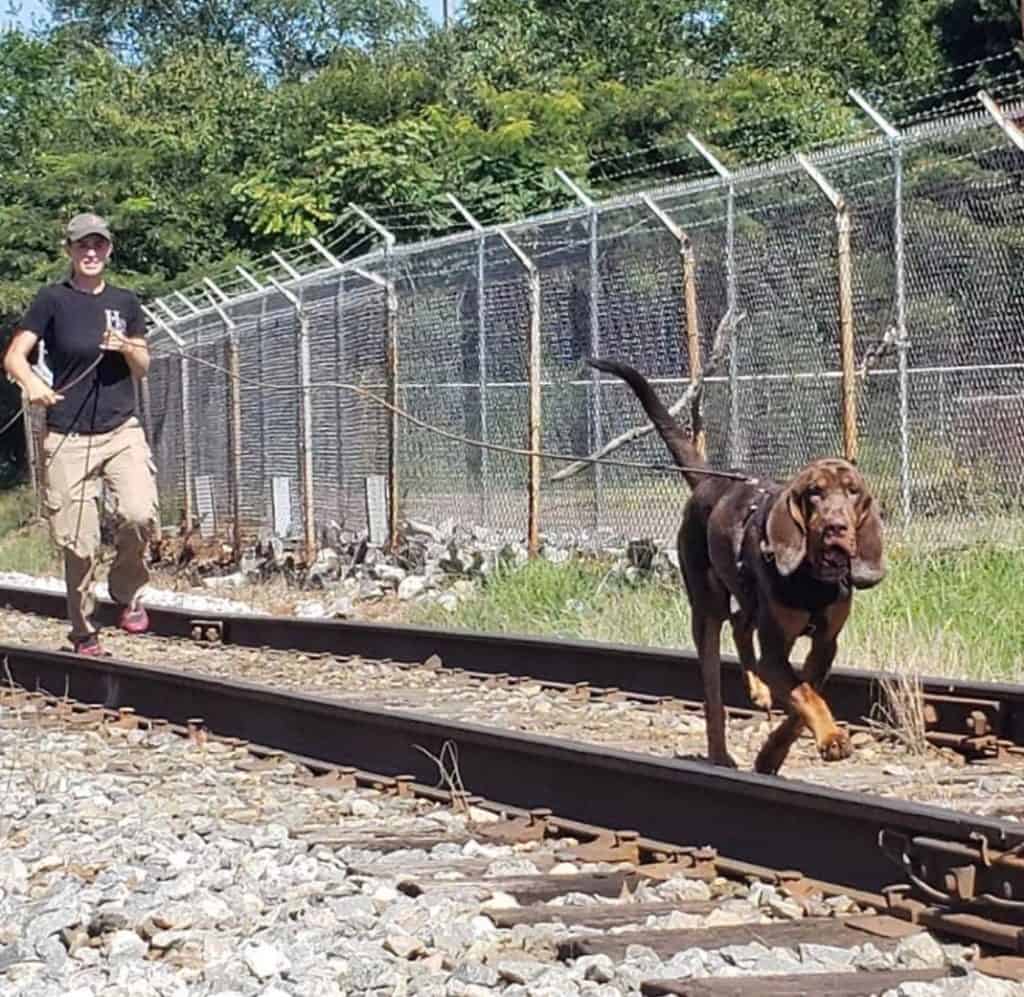
The Cuing Trap
Handlers cannot cue their dog when they are running blind trails because it would be pointless. When a trail is difficult enough, a dog must learn to work through it because their handler cannot help them. This is especially true in a real world scenario where you literally have no idea where your suspect is located. When a K9 is forced to work out difficult problems on its own, while the handler focuses exclusively on reading the signals their dog is sending them rather than trying to help “lead” the dog, a more skilled and reliable trailing team is formed.
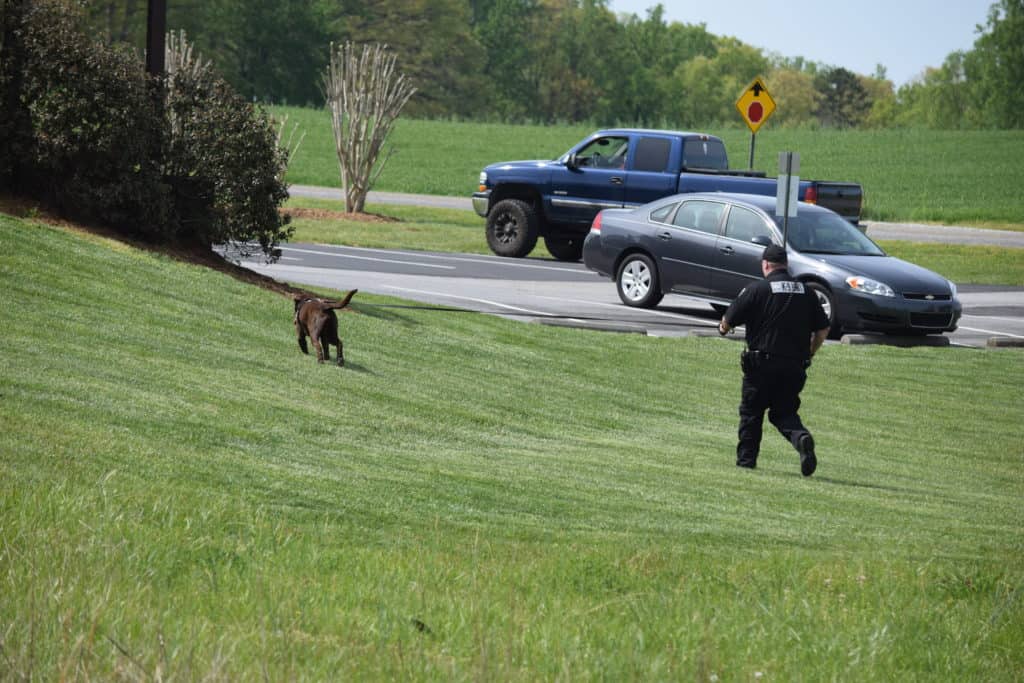
Recognizing Proximity Alerts
Recognizing your K9’s proximity alert near the end of the trail is incredibly beneficial. Knowing that you are close to the individual you are searching for allows the trailing team and their back up to plan accordingly rather than approaching a suspect unprepared. When a handler always knows where their trail layer is hiding, they do not have the opportunity to recognize the proximity alert for their self – typically because they know that they are very close and simply watch to make sure that their dog continues moving in the correct direction.
Blind Trails Build Team Trust
Handlers who frequently run blind trails are significantly more confident in their dog while working in an operational environment. These handlers trust their K9 to get the job done, rather than panicking or experiencing concern when suddenly they don’t know if they are following the right trail or they can’t be certain if their dog is working when a trail becomes more difficult. Simultaneously, dogs that often work blind trails do not rely on their handler’s cues but rather their own natural ability to effectively follow a trail.
Developing the ability to work as an effective trailing team is incredibly important. You can help ensure that you and your K9 are always improving your trailing skills by implementing enormously beneficial strategies such as running blind trails. Regularly running blind trails will help you break though a plateau, make your team significantly more solid in an operational environment and will ultimately take your team to the next level.

